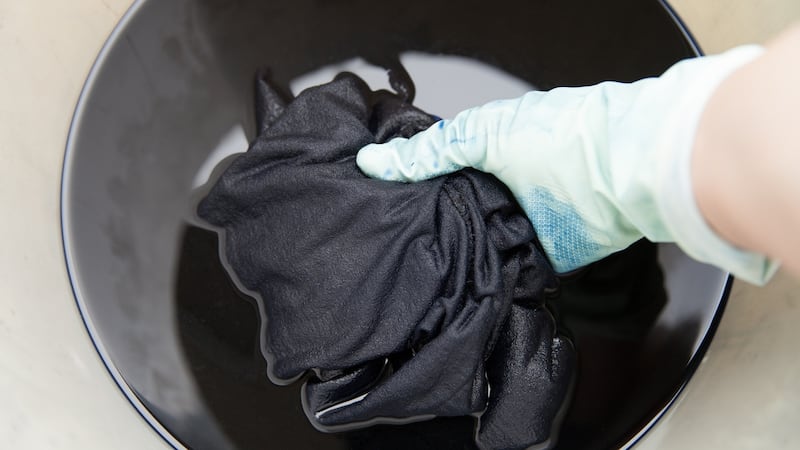"Everyone I know has a closet full of black clothes," wrote the late writer and director Nora Ephron in an essay called On Maintenance. I don't like to propagate cliches, but requests for tips on how to prevent black clothes from fading have far outnumbered any others in this series.
So here is some expert advice on how to maintain the black items in your wardrobe because, as Ephron wrote,”black makes your life so much simpler. Everything matches black, especially black.”
Wash less and with care
Sally Hughes, the founder of Kair laundry products, says to prevent black clothes from fading your washing machine setting is key, "you want to agitate the garment as little as possible". She recommends turning the garment inside out and washing on a cold, gentle cycle with a liquid detergent and avoiding tumble drying.
Rebecca Van Amber, a textile scientist from Royal Melbourne Institute of Technology University, agrees. She advises to wash black clothes in the machine infrequently, as the agitation and water causes the dye to come out of the garment, especially with natural fibres.
“Different types of fibres interact with water differently,” Van Amber explains, and this affects how they are dyed and how colour-fast the dyes are. For instance, because natural fibres are very absorbent, the dye used is very soluble, “so when you put them in the washing machine the dye will come out of the garment”.
She says synthetic fibres have a different relationship with water and because of this they shouldn’t fade as much. The dye used for fabrics such as polyester and nylon tends to be more stable than natural fibres because they are less absorbent. Some of the dyes and techniques applied to them “don’t use any water, they might be dyed more in a fibre stage than a garment stage”.
Since it's important to wash black clothes infrequently to retain the depth of colour, fashion designer Bianca Spender suggests spot cleaning with "a small amount of non-comedogenic soap on a toothbrush with some water".
Van Amber suggests pre-treating problem areas, such as where marks might be left by deodorant, with a stain stick before washing them. Or using “a fabric refreshing spray that you lightly mist before leaving it to air”.
Stay away from sun and damp
Van Amber says when drying black clothes be sure to keep them out of the sun. “UV light is the most powerful fading agent for clothing. If you want your colours to stay bright don’t hang things outside on the line in direct sunlight.”
Spender warns that tailoring and coats are susceptible to mould, so “it is important to store your clothing in an aerated space that is protected from dampness and moths”. She recommends using a natural moth repellent such as lavender.
Quick refreshes
Spender recommends bringing textured knit fabrics back to life by using a clothing brush.
For special garments such as silk evening dresses, she suggests wearing a makeup scarf when taking them on and off, to prevent marks from happening in the first place. A handy tip if marks do occur: “You can remove marks on crepe by rubbing the fabric against itself.”

Fixing fading
If you’re particularly crafty and resourceful, Van Amber says faded black garments can be over-dyed at home using a Rit Dye but there are a few things to keep in mind. Natural fibres such as cotton, linen or silk will take dye better than synthetics such as polyester or nylon. She says be sure to wear protective gloves and a mask and to use a plastic tub so you don’t turn your bathtub black.
“The most important thing is to make sure the garment is wet before you dye it,” she says, and once it’s in the pot, make sure you are continuously stirring it and keeping the water moving because otherwise “you’ll end up with a streaky garment”.
Spender also recommends home dyeing “in a big soup pot”. Or for favourite garments where dyeing is too risky, she says, “another option is to wear faded blacks with prints, florals or lighter tones”. Echoing Ephron’s sentiment that everything matches black – even faded black. – Guardian










